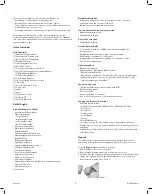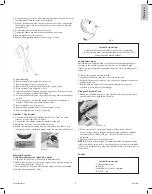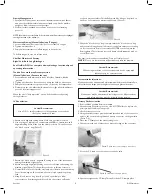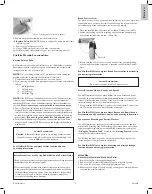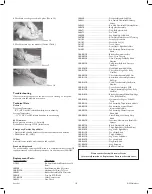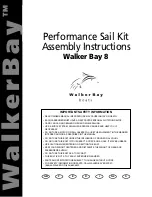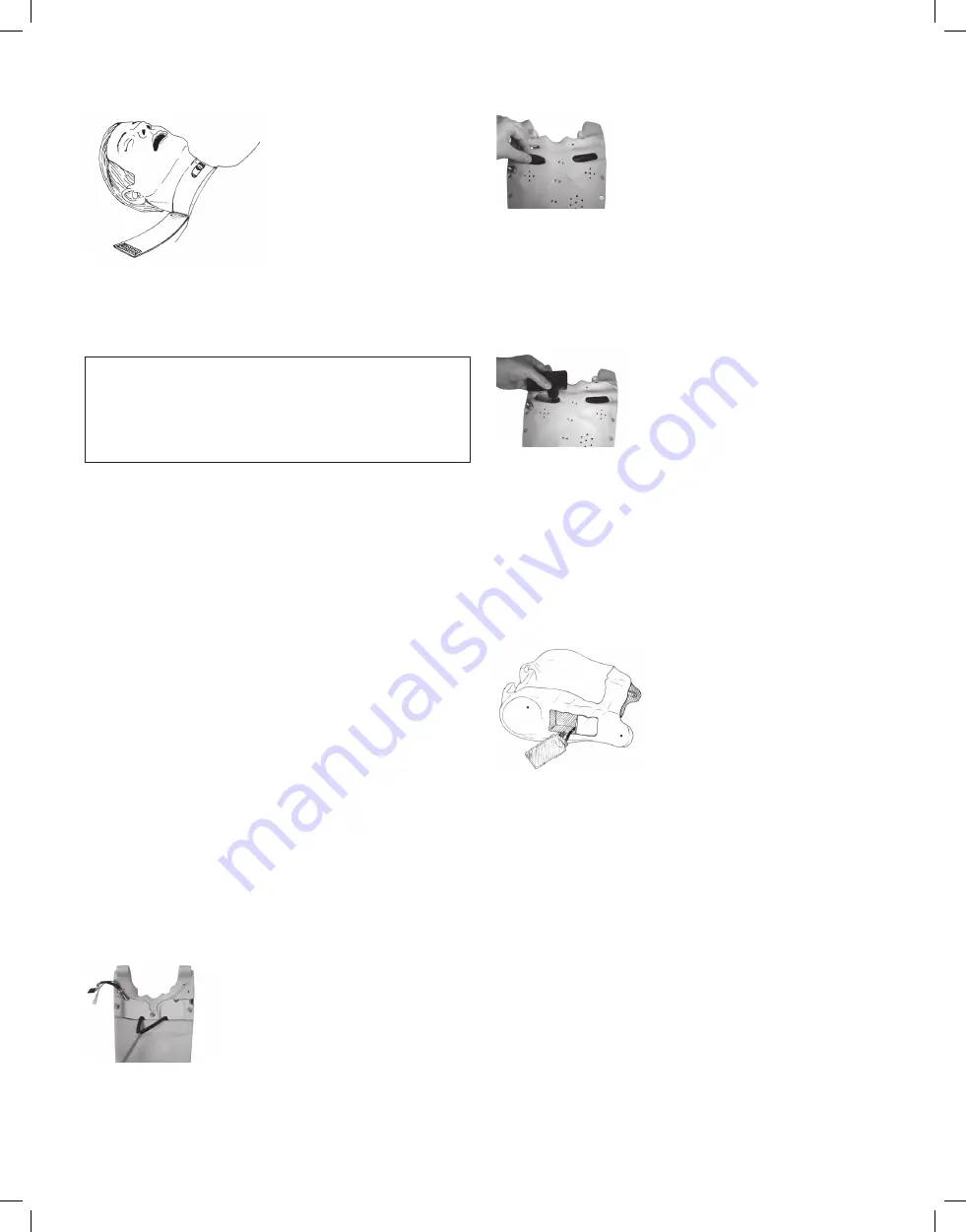
Fig. 3
5. Lay a Neck Skin Collar into molded track around neck area of the
manikin. (Figure 3)
NOTE:
If the used collar is still in good repair simply
slide the collar in either direction for a fresh site. If the collar is showing
ware, discard and replace with a new one.
6. Attach collar using Velcro
®
strips.
Laerdal Recommends
The neck skin collar is designed to provide multiple sites for needle
and surgical techniques. When a fresh site is needed, slide the collar
in either direction. If the neck skin collar is showing wear, discard
and replace with a new collar.
IV Cannulation
After IV training is complete:
1. Close both clamps on IV tubing and detach bag tubing from arm tubing.
Fill a 100cc syringe with water. Flush IV arm with syringe.
Note: This should be done over a basin to catch any fluid.
2. Using the empty syringe push air through venous system to remove
excess water.
Intramuscular Injections
After intramuscular injection training is complete:
1. Remove sponge from inside of injection pad skin.
NOTE: Do not store wet foam pads in skin. This will cause
shrinkage of injection pad skin.
2. Rinse sponge with water, allowing it to dry overnight.
3. Insert sponge back into injection pad skin.
NOTE:
A small amount of
powder applied to sponge will ease insertion.
4. Replace the pad in the manikin.
Urinary Catheterization
After urinary catheterization is complete:
1. Remove complete genitalia assembly.
2. Working over a basin empty the reservoir.
3. Rinse thoroughly and allow to dry overnight.
Pneumothorax:
(A) Bilateral Mid-Clavicular Sites:
1. Detach the chest skin from torso from tabs at the shoulder and back and
remove.
2. Remove the hard chest plate from the torso.
3. Disconnect bladder hose from Y connector, located on the underside of
the chest plate. (Photo 11)
Photo 11
4. Pinch and remove the bladder through the opening between the 2nd and
3rd intercostal spaces on the top side of the hard chest plate. (Photo12)
Photo 12
5. Trim bladder tubing to match original tubing length to fit this manikin
style.
6. Insert the new pneumothorax bladder into the top side of the chest
plate though the 2nd and 3rd intercostal space opening with the bladder
tubing exiting though the back side of the chest plate. NOTE: The
narrow edge of the bladder should be inserted closest to the sternum.
(Photo 13)
Photo 13
7. Reconnect hose to Y hose connector.
8. Return chest plate to proper position on torso.
9. Replace chest skin over torso, being sure to secure skin at shoulders and
back.
10. Fill puncture marks on the exterior of the chest skin with the Bladder
Replacement Kit.
(B) Mid-Axillary Site (RIGHT):
1. Remove chest skin from tabs at the shoulder and back.
2. Remove pneumo bladder box from right side of torso. (Figure 4)
Fig. 4
3. Disconnect bladder hose from inline hose connector, being sure hose
does not fall through hole and into torso.
4. Remove bladder from pneumo pad and discard.
5. Trim bladder tubing to match original tubing length to fit this manikin
style. Connect new bladder hose to inline hose connector.
6. Fold and insert new pneumo bladder into pneumo box.
7. Replace chest skin over torso, being sure to secure skin at shoulder and
back tabs.
8. Fill puncture marks on exterior of chest skin with the Bladder
Replacement Kit.
NOTE:
Bladders can be repaired using vulcanized or contact cement glue
(not provided). Cover punctured surface of pneumothorax bladders with
glue. Allow bladders to air dry completely overnight before replacing in the
chest plate.
Chest Drain:
Mid Axillary Site (LEFT)
1. Remove chest skin from tabs at shoulders and back.
2. Remove the chest tube drain module from the left mid-axillary site of the
manikin. (Photo 14)
Laerdal
8
ALS Simulator


